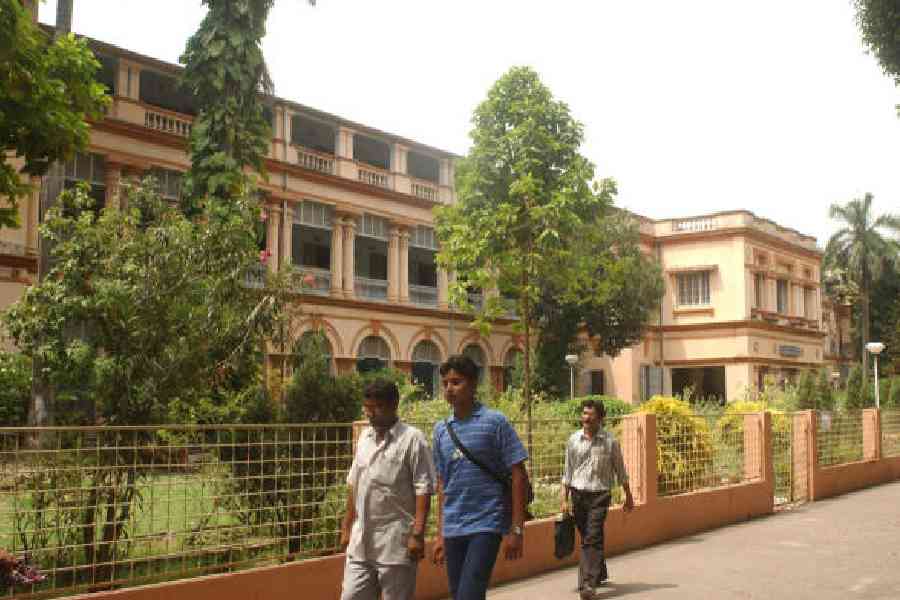 |
Painstakingly, with her thin, bony fingers, Munika Munda fishes out a photograph from the pocket of her frayed half-sleeved shirt. It’s a picture of her 12-year-old daughter, Munita.
“I don’t know where she is. I am desperate to see her, to hear her voice again,” Munda says, wiping the tears off her dark wrinkled face.
Munita was last seen one day in June 2010 when she was returning home from school. Munda was later informed that a neighbour called Chhebo had taken her away.
Munda even went to Sikkim in search of her daughter. She’d heard from one of Chhebo’s associates that Munita was in Rangpo. The worried mother, who earns Rs 90 a day when the tea gardens are open, took a shared taxi to Sikkim. She reached Rangpo — only to be told by the same man that she couldn’t meet Munita. “He gave me Rs 100 and told me to go away,” she says.
Munda doesn’t know if she’ll see her daughter again. For all around her, children — both boys and girls — have been disappearing. The tea-growing regions of north Bengal, where missing children was not such a problem even 10 years ago, are now witnessing the disappearance of minors. “The numbers are growing every year,” says Sugata Sen, superintendent of police, North 24 Parganas, who was earlier holding the same post in Jalpaiguri district.
West Bengal tops the list of missing children in India. In 2011, of the 32,342 children who went missing from across the country, 11,228 were from Bengal, mostly from Nadia, South and North 24 Parganas districts.
Munita is one of the 98 children from Darjeeling district who disappeared the same year. In 2011, 92 children from the area were reported missing. Among them is 13-year-old Nandu of Malangi village in Jalpaiguri.
 |
| Gillian Anderson, who was in India recently to shoot a film on trafficking |
On May 8, 2011, Sadhani Urao saw her son for the last time before she left for the tea gardens in the morning. When the daily wager came home eight hours later, Nandu’s friends told her that he had been taken away in a car with four other boys. They had apparently left for the New Alipurduar railway station in Jalpaiguri.
Urao got a call from Nandu in February last year. He said he was working in someone’s house in Delhi. Before she could ask any questions, the line got disconnected.
A total of 305 children went missing from the six districts of north Bengal in 2009. Of them, 139 were from the tea garden districts — Darjeeling, Jalpaiguri and Cooch Behar, police figures show. In 2010, more than half of the 333 missing children from north Bengal were from these three districts.
Many of them — like Nandu — are brought to cities by villagers who sell them to agents. The children do domestic work in cities they’ve never seen, where the language is as alien as the food. Some of them move from one house to another, from city to city — and are often never heard of ever again.
Poverty is the thread that connects the missing. Some children are promised salaries, and some are just whisked away and sold to agents. Earlier, children of daily labourers who plucked tea leaves in the gardens were assured of jobs as they grew older. Now jobs for labourers aren’t certain.
“There are 19 lakh families below the poverty line in our district,” says Smaraki Mahapatra, district magistrate, Jalpaiguri. “For such families, sending children out to work is the only option. They don’t even check the whereabouts of these agents who take their kids away.” Adds Reynold Chhetri, deputy superintendent of police, Darjeeling: “The villagers supply children to placement agents and traffickers in cities such as Delhi, Mumbai and Gurgaon and earn handsome amounts.”
Though most tea gardens barring a few have become operational again (272 tea estates operate in the region), the trafficking hasn’t stopped. “Boys are mostly employed as domestic help and construction workers. Girls are also made to work as prostitutes,” Chhetri says.
“A girl or a boy who is to be employed as domestic help would fetch us around Rs 12,000. But if the girl is taken for prostitution, the amount is Rs 80,000 to Rs 1 lakh,” says a local agent in Kalchini village, Jalpaiguri.
Banya Garai of Lankabari in Cooch Behar went to Haryana with a local villager who promised her a job but put her in a brothel. “They used to beat me up when I refused to entertain their guests,” says the malnourished 16-year-old. She would have been another statistic if she had not sought help from the police one afternoon. The police brought her back to her village. The police say that behind missing children, there is often a relative, occasionally even a parent.
Munda, for instance, got to know that Chhebo had given her alcoholic husband, Falguni, Rs 500 for his daughter. “He later told me that he didn’t know Chhebo would not bring Munita back,” she says. With no prospects of jobs in the villages, children often leave for the cities to earn just a few rupees.
Nandu wanted a pair of jeans and a cell phone. “Perhaps the trafficker enticed him with this,” says Urao, who’s lodged a report with the police.
Not all cases of missing children are, however, reported to the police. “Parents who have willingly sent their children away don’t lodge a complaint,” Chhetri says.
Investigating officers say that local women are also often roped in to help traffickers whisk away children. “Women are not looked at with suspicion, so it makes the job easier for the traffickers ,” says Chhetri.
Zafar Wahid of Sibeshwar village in Cooch Behar agrees. He believes his 14-year-old-daughter Najma, who disappeared three years ago, was abducted by a neighbourhood woman. “Her school friends told me that the neighbour met Najma and took her supposedly for shopping to Alipurduar in a van,” Wahid says.
The woman was later arrested, but Najma is still missing. A villager who works as a daily wager in Kashmir said he’d spotted Najma in a Srinagar market. “We were going there to get her back, but heard she had been taken out of Srinagar,” Wahid adds. The police say that apart from Delhi and Mumbai, the children are taken to Kashmir — where there’s an acute shortage of labour.
Prafulla Minj and Krishna Sau, 12-year-old boys from Jalpaiguri’s Turturi village, were made to work at a construction site in Kashmir by a local placement agent. Krishna returned to his village after three months, but there is no news of Prafulla.
Some of the children are traced by the police and non-governmental organisations. In the last three years, 125 children have returned to Jalpaiguri and 90 to Darjeeling.
But life is not easy for these children either. “Nobody talks to us in the village,” says Radharani Sarkar. “Who will marry me,” asks the 13-year-old who was abducted by unidentified men from her Cooch Behar village two years ago. A Bengali client who visited the brothel in Jaipur helped Radharani return to her village.
Sometimes, families turn away their children too. “If my daughter is into prostitution, I will not accept her even if she comes back,” Wahid says.
Munda, however, wants her daughter back at any cost. “But my wait seems like an endless one,” she says.
(Some names of victims have been changed to protect their identity.)










